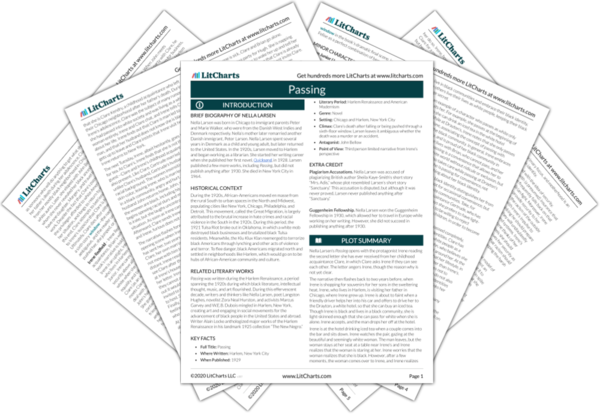At several points throughout the novel, Larsen describes Clare’s face as an “ivory” mask. Larsen uses this description particularly when Irene feels that Clare is using her social grace to obscure her true feelings, or thinks that Clare is secretly mocking her while maintaining a façade of congeniality. The idea of masking complements the overall themes of passing throughout the book, as both masks and passing suggest alternative identities and hidden realities. Moreover, masking is racialized in the book: Clare’s face is described as an “ivory” mask, suggesting that Clare’s whiteness is a sort of costume. Larsen uses the idea of masking to suggest the performative nature of race—by describing Clare’s whiteness as theatrical, Larsen calls into question biological or genetic conceptions of racial difference.













